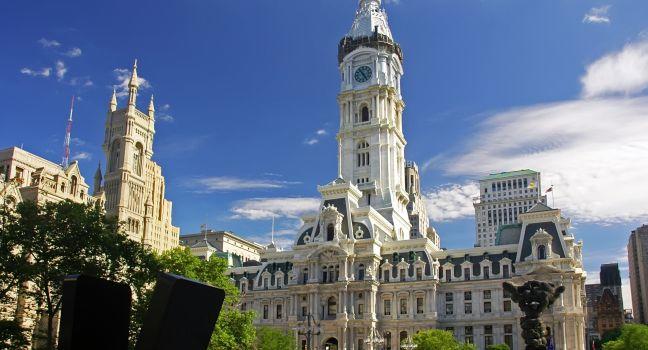City Hall

Topped by a 37-foot bronze statue of William Penn, City Hall was Philadelphia's tallest building until 1987; you can study the trappings of government and also get a panoramic view of the city here. With 642 rooms, it's the largest city hall in the country and the tallest masonry-bearing building in the world: no steel structure supports it. Designed by architect John McArthur Jr., the building took 30 years to build (1871–1901) and cost taxpayers more than $23 million. The result has been called a "Victorian wedding cake of Renaissance styles." Placed about the facade are hundreds of statues by Alexander Milne Calder, who also designed the statue of William Penn at the top. Calder's 27-ton cast-iron statue of Penn is the largest single piece of sculpture on any building in the world.
Not only the geographic center of Penn's original city plan, City Hall is also the center of municipal and state government. Many of the magnificent interiors—splendidly decorated with mahogany paneling, gold-leaf ceilings, and marble pillars—are patterned after the Second Empire salons of part of the Louvre in Paris. On a tour each weekday at 12:30 you can see the Conversation Hall, the Supreme Court of Pennsylvania, the City Council chambers, and the mayor's reception room. You can attend the frequently heated City Council meetings, held each Thursday morning at 10.
To top off your visit, take the elevator from the seventh floor up the tower to the observation deck at the foot of William Penn's statue for a 30-mile view of the city and surroundings. The elevator holds only six people per trip and runs every 15 minutes; the least crowded time is early morning. The 90-minute building tour, including a trip up the tower, steps off weekdays at 12:30. The tour office is in Room 121.



